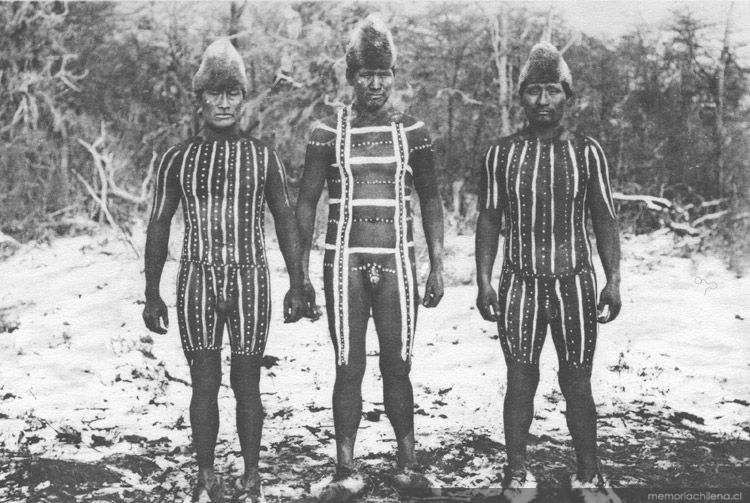SANTIAGO – A bill in Congress would recognize the Selk’nam as an existing indigenous tribe. Currently, members of the tribe cannot access benefits under the Indigenous Development and Protection Law because the tribe was previously declared extinct. From the late 1800s, the Selk’nam, the last tribe contacted by colonizers, were systematically hunted.
The lower house of Congress approved a new bill that would officially recognize the Selk’nam as one Chile’s existing indigenous tribes. This bill would modify the current Indigenous Development and Protection law to add the Selk’nam as a protected indigenous tribe and an official ethnic group, thus allowing them to qualify for government aid and development funds.
The Selk’nam tribe was officially declared extinct in 1974 when Angela Loij, considered to be the last Selk’nam, died in Argentina. Since then, the descendants of the Selk’nam tribe have raised their voices to show that they are far from extinct. At the moment, the Chilean Selk’nam Corporation and the Covadonga Ona Community represent over 200 descendants of the Selk’nam tribe. The bill is now being evaluated by the Senate.
Who are the Selk’nam?
The Selk’nam are indigenous to Isla Grande de Tierra del Fuego. According to their own stories, the Selk’nam were once a part of the Tehuelche tribes that resided in the south of Argentina, until they left the mainland and settled the island. They shared many similarities with the Tehuelche, including language, traditions, and physical attributes (e.g., the men were often over 1.80 m (5′ 11″) tall). In contrast, the Selk’nam did not share these similarities with their southern neighbors, the Yagan, who originated from the south of Chile.
The Selk’nam were nomads and lived in a patriarchal society with large families. When a woman married, she would go live with her husband’s family, where she would help forage for food with the other women of the group. The men of the group used bows and arrows to hunt guanacos that lived on the island. They also used harpoons and other fishing materials to obtain seafood.
They are well known for incorporating body paint into their daily wear, which they changed daily and which helped express their moods. The intricate patterns that they used have become staples of the Patagonia. Even the official team of the region donned shirts inspired by their body paint.
Also read:
All students obliged to learn Mapuche language and culture in Recoleta
Selk’nam Religion
The Selk’nam are also well known for their mythology and deities, which have been passed down orally from generation to generation. Mistakenly characterized as polytheistic, the Selk’nam were actually Henotheistic: they worshiped one superior deity who was accompanied by minor deities.
This supreme god was named Temáukel and shared many similarities with the god of Abrahamic religions, with the exception that he was not omnipresent. Temáukel was the creator of the earth as well as the sky and was rarely mentioned directly, with them using terms like “aiyemok so’onh haskán” (He who inhabits the sky).
The rest of the deities were characterized as the Howenh, which represented the forces of nature and were not seen as gods, but as mythological ancestors. The Selk’nam also incorporated astronomy into their beliefs, separating the cosmos into four Sho’on, which also served as the homes for the different Howenh.
The first Sho’on was named the Kamuk and represented the northern sky, which was the home of Kojh the deity in charge of the seas. The legend tells that he created the numerous channels of the area to allow his daughters, who were whales, to successfully evade capture.
The southern sky was called Kéikruk and was home to Čénuke and his brother Kwányip, who were the ones responsible for the creation of death and for controlling the lengths of day and night.
Wintek, was the eastern sky and was home to Kénos, known as the terraformer and was the oldest of the Howenh. His mission was to create the earth and begin civilization.
Lastly, we have the western sky, Kenénik, which was home to Shenrr, the god of wind, and Kren, the god of the sun. Kren was seen as the most benevolent god. The only Howenh who did not live in the four Sho’on was the goddess of the underworld Xalpen, who was central to the Hain ceremony.
Through this ceremony, the klóketen, boys of 14 to 18 years, were admitted to adulthood. The ceremony took place in a small hut and consisted of various challenges that would teach them the truths about life. During the ceremony, the boys would be visited by Xalpen who would proceed to “kill” the Klóketen, who would then be “revived” as adults.
All students obliged to learn Mapuche language and culture in Recoleta
Genocide
The first time an outsider laid eyes on the Selk’nam was on Oct. 31, 1520, during Ferdinand Magellan’s trip through the strait of Magellan. Magellan recounted that while traveling the strait he saw numerous fires near the shore, inspiring him to dub it “Tierra del Fuego” (“land of fire”).
Europeans did not have closer contact with the Selk’nam until 1580, and European colonists did not have regular contact with the Selk’nam for another 300 years. When they did, relations were tense, and, ultimately, the conflict between the two led to the near extinction of the Selk’nam.
It was 1883 that was the beginning of the near-end for the Selk’nam. The Chilean government issued sheep ranching concessions to settlers of the island, and the ranchers started laying claims to the land. The Selk’nam, however, had no concept of private property and hunted the sheep.
The missionaries tried and failed to persuade the Selk’nam to stop this practice, and an extermination campaign was initiated by the sheep companies. They began issuing bounties on the tribe, paying one pound sterling per dead Selk’nam.
Within 10-15 years, the Selk’nam population went from as many as 4,000 down to about 500. Adding insult to injury, some were captured and place in human zoos in Europe.
In 1890, the Chilean government decided to place the remaining Selk’nam in reservations with the goal of protecting them from the slaughter of the Selk’nam hunting groups that had been created by ranchers. In the end, the reservations became more like concentration camps, European diseases spread through them and decimated the few surviving Selk’nam.
Many anthropologists and missionaries made it their goal to preserve the Selk’nam culture, thus allowing the culture to survive their tribe. As a result, just as the tribe has survived, so has its culture.
As but one example of the effort, Selk’nam descendant, Joubert Yanten Gomez, known as Keyuk Selk’nam, has helped keep the Selk’nam language alive by reaching out to his family members and by unearthing forgotten recordings of the language. As of this writing, he is the only known Selk’nam speaker on earth.

Diego Rivera is currently a senior in University, finishing up his audiovisual degree. You can find him on Twitter as @Piover45.

